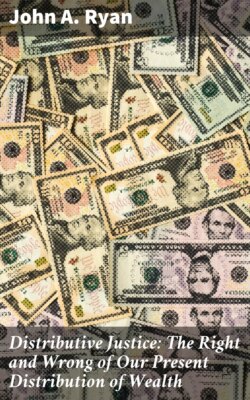Читать книгу Distributive Justice: The Right and Wrong of Our Present Distribution of Wealth - John A. Ryan - Страница 14
На сайте Литреса книга снята с продажи.
Private Ownership General in Historical Times
ОглавлениеTable of Contents
So much for land tenure in prehistoric times. During the historical period of the existence of the race, almost all civilised peoples have practised some form of private ownership in the matter of their arable lands. While differing considerably at various times and places, it has always excluded communal allotment of land and communal distribution of the product, and has always included private receipt of the product by the owner-user, or private receipt of rent when the owner transferred the use to some one else. But it did not always include the right to determine who should be the user. In the later centuries of the feudal system, for example, the lord could not always expel the tenants from the land, nor prevent them from transmitting the use of it to their children. Moreover, the rent that he received was customary and fixed, not competitive and arbitrary, and it was looked upon in great measure as a return to the lord for social, military, and political services, as well as a payment for the use of land. This system was private ownership, indeed, but if we apply the Roman notion of ownership we shall find it difficult to decide whether the tenant or the lord should more properly be called the owner. At any rate, the right of ownership possessed by the lord was greatly limited by restrictions which favoured the masses of the cultivators. In every community there were common wood lands and pasture lands for the free use of all the inhabitants. Among other restrictions of private ownership and control in favour of the principle of equal access to the land by all persons, we may mention the division of the English villein's holding into several portions, intermingled with those of his neighbours, so that each would have about the same amount of good land; and the ancient Hebrew law whereby alienated land was returned to the descendants of its original owners every fifty years.[7]
Reckoning the feudal lord, and all other overlords who had the same control over land, as private proprietors, we may say that in historical times the arable land of every country has been owned by a minority of the population. Since the downfall of feudalism, the tendency in most regions of the Western world has been toward an increase in the number of owners, and a decrease in the number of great estates. This tendency has been especially marked during the last one hundred years. It will, however, need to continue for a very long time, or else to increase its pace very rapidly, before land ownership will be diffused in anything like the measure that is necessary if its benefits are to be shared by all the people. Even in the United States, where the distribution is perhaps more general than in any other country, only 38.4 per cent. of the families in towns and cities owned, in 1910, the homes in which they lived, and therefore the land upon which their homes were located. In the rural districts the per cent. of home-owning families was only 62.8.
